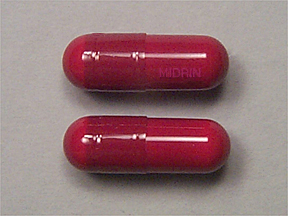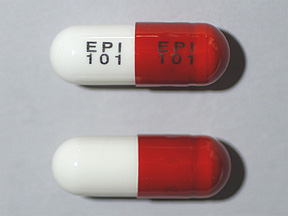

ABOUT MIGRAINE HEADACHES
A migraine can be disabling . with symptoms so severe, all you can think about is finding a dark, quiet place to lie
down. Up to 17 percent of women and 6 percent of men have experienced a migraine.
In some cases, these painful headaches are preceded or accompanied by a sensory warning sign (aura), such as flashes of
light, blind spots or tingling in your arm or leg. A migraine is also often accompanied by other signs and symptoms,
such as nausea, vomiting, and extreme sensitivity to light and sound. Migraine pain can be excruciating and may
incapacitate you for hours or even days.
Fortunately, management of migraine pain has improved dramatically in the last decade. If you've seen a doctor in the
past and had no success, it's time to make another appointment. Although there's still no cure, medications can help
reduce the frequency of migraine and stop the pain once it has started. The right medicines combined with self-help
remedies and changes in lifestyle may make a tremendous difference for you.
A typical migraine attack produces some or all of these signs and symptoms:
- Moderate to severe pain, which may be confined to one side of the head or may affect both sides
- Head pain with a pulsating or throbbing quality
- Pain that interferes with your regular activities
- Nausea with or without vomiting
- Sensitivity to light and sound
When left untreated, a migraine typically lasts from four to 72 hours, but the frequency with which headaches occur
varies from person to person. You may have migraines several times a month or just once or twice a year.
Not all migraines are the same. Most people experience migraines without auras, which were previously called common
migraines. Some, however, have migraines with auras, which were previously called classic migraines. If you're in the
second group, you'll likely have an aura about 15 to 30 minutes before your headache begins. Auras may continue after
your headache starts or even occur after your headache begins. When you're experiencing an aura, you may:
- See sparkling flashes of light
- Perceive dazzling zigzag lines in your field of vision
- Experience slowly spreading blind spots in your vision
- Feel tingling, pins and needles sensations in one arm or leg
- Rarely, experience weakness or language and speech problems
Whether or not you have auras, you may have one or more sensations of premonition (prodrome) several hours or a day
or so before your headache actually strikes, including:
- Feelings of elation or intense energy
- Cravings for sweets
- Thirst
- Drowsiness
- Irritability or depression
Migraine symptoms in children
Migraines typically begin in childhood, adolescence or early adulthood and may become less frequent and less intense
as you grow older. In addition to physical suffering, severe headaches often mean missed school days and trips to the
emergency department, as well as lost work time for anxious parents.
Children's migraines tend to last for a shorter time. But the pain can be disabling and can be accompanied by nausea,
vomiting, lightheadedness and increased sensitivity to light. A migraine tends to occur on both sides of the head in
children.
Children may also have all of the signs and symptoms of a migraine . nausea, vomiting, increased sensitivity to light
and sound . but no head pain. These "abdominal migraines" can be especially difficult to diagnose.
The good news is that some of the same medications that are effective for adults also work for children. Your child
doesn't have to go through the pain and disruption of migraines. If your child has headaches, talk to your
pediatrician. He or she may want to refer your child to a pediatric neurologist.
Although much about headaches still isn't understood, some researchers think migraines may be caused by functional
changes in the trigeminal nerve system, a major pain pathway in your nervous system, and by imbalances in brain
chemicals, including serotonin, which plays a regulatory role for pain messages going through this pathway.
During a headache, serotonin levels drop. Researchers believe this causes the trigeminal nerve to release substances
called neuropeptides, which travel to your brain's outer covering (meninges). There they cause blood vessels to become
dilated and inflamed. The result is headache pain.
Migraine triggers
Whatever the exact mechanism of headaches, a number of things may trigger them. Common migraine triggers include:
- Hormonal changes. Although the exact relationship between hormones and headaches isn't clear, fluctuations in
estrogen
seem to trigger headaches in many women with known migraines. Women with a history of migraines often report headaches
immediately before or during their periods, and this corresponds to a major drop in estrogen. Others have an increased
tendency to develop migraines during pregnancy or menopause. Hormonal medications, such as contraceptives and hormone
replacement therapy, also may worsen migraines.
- Foods. Certain foods appear to trigger headaches in some people. Common offenders include alcohol, especially beer
and
red wine; aged cheeses; chocolate; fermented, pickled or marinated foods; aspartame; overuse of caffeine; monosodium
glutamate . a key ingredient in some Asian foods; certain seasonings; and many canned and processed foods. Skipping
meals or fasting also can trigger migraines.
- Stress. A hard week at work followed by relaxation may lead to a weekend migraine. Stress at work or home also can
instigate migraines.
- Sensory stimuli. Bright lights and sun glare can produce head pain. So can unusual smells . including pleasant
scents,
such as perfume and flowers, and unpleasant odors, such as paint thinner and secondhand smoke.
- Changes in wake-sleep pattern. Either missing sleep or getting too much sleep may serve as a trigger for migraine
attacks in some individuals.
- Physical factors. Intense physical exertion, including sexual activity, may provoke migraines.
Changes in the environment. A change of weather, season, altitude level, barometric pressure or time zone can prompt a
migraine.
- Medications. Certain medications can aggravate migraines.
Many people with migraines have a family history of migraine. If both your parents have migraines, there's a good
chance you will too. Even if only one of your parents has migraines, you're still at increased risk of developing
migraines.
You also have a relatively higher risk of migraines if you're young and female. In fact, women are three times as
likely to have migraines as men are. Headaches tend to affect boys and girls equally during childhood but increase in
girls after puberty.
If you're a woman with migraines, you may find that your headaches begin just before or shortly after onset of
menstruation. They may also change during pregnancy or menopause. Many women report improvement in their migraines
later in pregnancy, but others report that their migraines worsened during the first trimester. If pregnancy or
menstruation affects your migraines, your headaches are also likely to worsen if you take birth control pills or
hormone replacement therapy (HRT).
This site is not maintained or approved by the actual makers of Midrin. And it is a work in progress. We just
put this site up because as Midrin takers ourselves, we were frustrated with the lack of information out there about
Midrin and how hard it can be to obtain these days.
Migraine
Treatment



